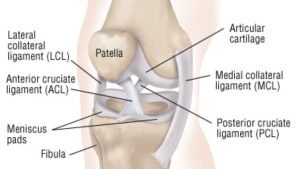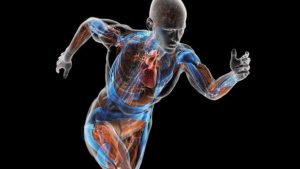Have a hard time moving around because of back pain? Does your back hurt when you’re walking, sleeping, or sitting down? If so, you’re not alone. One in six Australians is struggling with back pain. Their symptoms vary from mild to severe. Besides pain, they often experience tension or stiffness in the back.
Luckily, there are ways to treat low back pain naturally. Medications and surgical intervention should be your last option. Physiotherapy has emerged as a safe, effective way to relieve back pain and discomfort. A skilled therapist can recommend exercises that will strengthen your muscles and increase mobility.
How Effective Is Physio for Low Back Pain?
As a centre for movement and musculoskeletal care, we are delighted to review the RACGP‘s re-vamped guideline for the management of knee and hip osteoarthritis, a condition impacting millions of Australians. Strong recommendations include weight management and land-based exercise: muscle strengthening, stretching/range of motion, aerobic conditioning, neuromuscular/balance, cycling, Tai Chi and yoga. Watch Channel 7‘s recent story on the re-vamped guideline below.
Physiotherapy is considered one of the best ways to ease pain and aches. Studies confirm its effectiveness in the treatment of low back pain.
In a clinical trial involving 57 patients, those who enrolled in a four–week physiotherapy program experienced significant improvements in their symptoms. In some cases of back pain, physio can be just as effective as surgery but without the risks and side effects.
Depending on your needs, a physiotherapist can prescribe manual therapy, massage, exercise prescription or other preventive measures. They can also teach you exercises that stretch and strengthen the back muscles while increasing your range of motion. Most exercise plans require no equipment and can be done at home.
You can also ask the physiotherapist to recommend protective procedures to reduce complications and accelerate healing. Ergonomic adjustments and position changes, for instance, may help prevent and ease low back pain in the long run.
A well-designed workout program can make all the difference. The key is to be consistent, maintain good form, and stick to your treatment plan. Your symptoms should improve consistently over a number of weeks.
Let’s take a quick look at the best physio exercises for low back pain:
*You you should also seek advice from your Physiotherapist prior to starting any exercises as different back conditions respond to different exercise programs.
Back Extensions
This basic exercise stretches and mobilises the spine into extension (backwards). It requires no equipment and can be done anytime, anywhere.
To get started, lie on your stomach. Slowly raise your torso and prop yourself on the elbows and forearms. Push down wit your hand to arch your back. Look straight ahead. Maintain the position for five to 10 seconds. Repeat at least eight times. Keep your neck long throughout the movement.
Knee-to-Chest Stretch
This move helps stretch your low back muscles and hamstrings, leading to an increased range of motion.
Simply lie on your back with the knees bent. Place your right hand on the right leg and pull it gently toward your chest. Hold for five seconds. Switch legs and repeat. This exercise can be also done with both legs up towards the chest.
Child’s Pose
The child’s pose is widely used in yoga and physiotherapy for its ability to lengthen the spine. It also stretches the back muscles and improves flexibility.
Sit on your fours, with the buttocks resting on your heels. Push your hands forward on the floor and stretch your back. Maintain the pose for up to 30 second. Repeat two or three times.
The Bridge
If your back pain is eased by lying down or standing, incorporate the bridge into your routine. This exercise strengthens the lower back muscles and glutes.
Lie on your back with your knees bent at 90 degrees. Squeeze your core muscles and buttocks while gently lifting your hips off the ground. Your body knees, hips, and shoulders should form a straight line. Maintain a neutral spine.
Hold the pose for at least six seconds. Slowly return to the starting position and repeat.
Piriformis Stretch
The piriformis stretch works best when your back pain is eased by sitting down. This basic movement stretches your back and leg muscles, leading to greater flexibility.
Lie on your back with your knees bent and your arms at your sides. Cross your right leg over your left so that your right ankle rests on the left knee. Gently pull the right knee toward the right shoulder using your hands. If you do it right, you should feel the stretch in your hips and glutes.
Maintain the position for at least 15 seconds. Switch sides and repeat up to four times with each leg.
Side Plank
The side plank strengthens your back and core muscles while improving your balance. When done regularly, it may help relieve back pain and improve overall fitness.
Lie on your side with your right elbow and forearm on the floor. Keep your legs extended and your back straight. Lift your hips off the ground and hold for 30 seconds or more.
Return to the starting position and repeat. Do the same on the left side. As your strength increases, hold the plank for a longer time.
Pelvic Tilt
The pelvic tilt helps strengthen the abdominal and lower back muscles. It’s used in physiotherapy, rehab, and postpartum care.
Lie on your back with the knees bent. Bend your pelvis slightly and tighten your core muscles. Maintain the contraction for at least six seconds while taking deep breaths. Repeat eight times or more.
Bird-Dog Pose
This exercise improves your balance and coordination, boosts mobility, and builds core strength. It also stretches your spine, which helps ease pain and discomfort.
Sit on your fours, with the palms of your hands grounded on the floor. Raise your right arm and left leg simultaneously with a slow, controlled motion. Do not arch your back! Return to the starting position. Repeat about 10 times on each side.
These are just a few of the many physio exercises for lower back pain. Your treatment plan can also include hip flexor stretches, lumbar rotations, back bends, side bends, lunges, and back stretches.
Keep your routine varied and adjust it according to your needs. Use resistance bands or exercise balls for increased resistance. Avoid heavy weights and exercises that put stress on your spine, such as barbell squats, sit-ups, and shoulder presses until your Physiotherapist has progressed your treatment plan under supervision.







